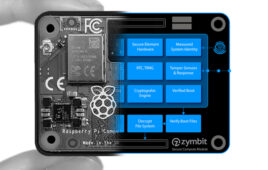Cycling is healthy, keeps the body supple, exercises the joints and strengthens the back. A company that places great value on comfort is Ergon International GmbH, which manufactures ergonomic bicycle accessories. Handlebar grips play an important role in cycling comfort. Researchers at the Fraunhofer Institute for Structural Durability and System Reliability LBF are working with the Koblenz-based company on methods and tools for accelerating and digitalizing the development process for ergonomic bicycle grips.
Spring is in the air and the sun is shining: time for many cycling enthusiasts to get their bikes out of the basement and ride out into the countryside. However, the longer the trip, the more uncomfortable they feel: their neck becomes stiff, their fingers feel numb, their knees begin to ache. According to studies, between 50 and 90 percent of all cyclists suffer from such complaints. The Koblenz-based manufacturer of bicycle accessories Ergon International GmbH is aware of these problems. To make cycling as comfortable as possible and help cyclists avoid aches and pains, this SME (small and medium-sized enterprise) develops ergonomic bicycle grips. During the development process, it receives support from Fraunhofer LBF. As part of the SME 4.0 Center of Competence Darmstadt (see box), researchers at LBF are contributing their expertise to the handlebar development process.
Virtual, numerical model takes into account parameters such as pressure distribution
“Grips today are often designed based on experience, with the input of ergonomics specialists, designers and material specialists. In this way, initial prototypes are created, which are tested and evaluated by test cyclists. The feedback from the testers is subjective and the results are often difficult to reproduce,” Jan Hansmann, scientist at Fraunhofer LBF, says.
To shorten the test phases, design a more effective development process and reduce material costs, the project partners worked closely together to devise a method to allow an initial verification of the characteristics of bicycle handles by means of numerical simulation. Using finite element software, Hansmann and his colleagues create a virtual, numerical model of the handle and the hand, which takes into account various parameters, such as materials, material composition, pressure distribution, damping, hand geometry and the different parts of the hand such as muscles, skin, bones and tissue. The goal is to produce grips that the cyclist does not feel, that ease the strain on the wrist and that dampen the little bumps and absorb the vibrations on long cycle rides.
“If you try out prototypes with different materials, you have to manufacture different materials in advance accordingly and go through the injection molding process repeatedly. With the support of the simulation, you need less iterations and instead of, say, six different prototype models, you only need two,” says Hansmann, explaining an advantage of digitalization. “We’re able to determine initial mechanical characteristics even before a real prototype is produced.”
Another benefit: The method can also be transferred to other accessories, such as the saddle.
To be able to evaluate various grips, the team of researchers carried out additional tests, the results of which were also taken into account in the simulation: Using vibration tests in the laboratory, Hansmann and his colleagues test how vibrations – this applies particularly to riding mountain bikes or racers – affect the tiring of the lower arms. The requisite acceleration and force measurement values were determined using electromyography (EMG).
Fewer prototypes needed thanks to simulation
The new method permits an initial, quick assessment of grips without having to manufacture prototypes. Although test runs are still required, the number of prototype variants needed is reduced. Furthermore, the tests can be carried out all year round, regardless of the season, and the number of test subjects can also be reduced. This results in a faster development process. In addition, there are savings in terms of tool and manufacturing costs in the development phase. “Digitalization is very helpful for us, so we want to continue to build up know-how in this area. The development of bicycle grips will possibly be the first of many projects we conduct with digital support,” says Franc Arnold, CEO of Ergon International GmbH, underscoring the success of the collaboration.
Filed Under: Product design




